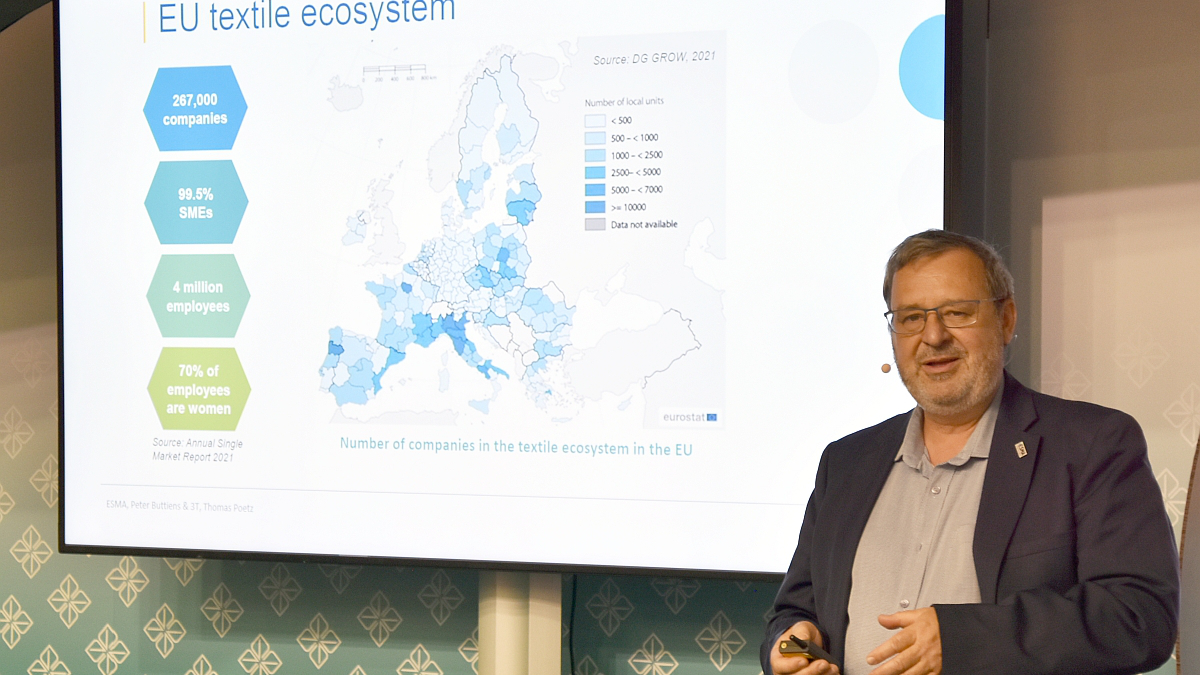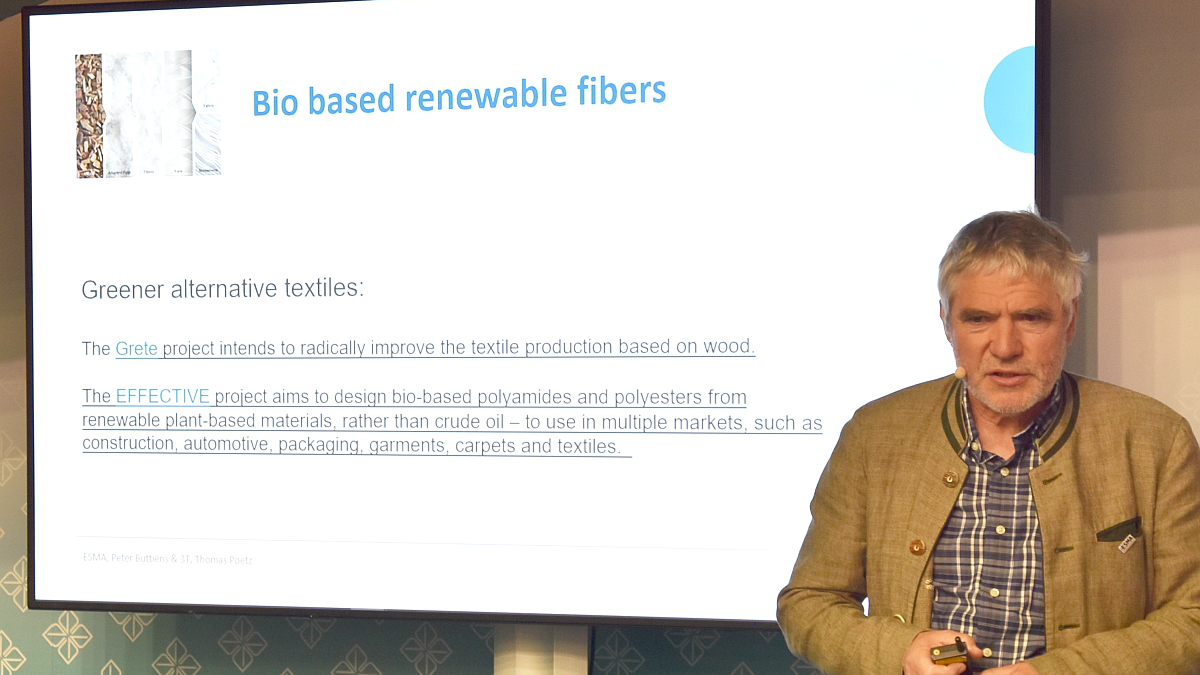
Peter Buttiens from the European Specialist Printing Manufacturers Association (ESMA) and Thomas Poetz from 3T Industry InkJet Consulting are experts in digital printing for the textile industry. In an interview, they explain what contribution textile printing can make in the transformation to greater sustainability.
What themes and trends are currently driving the textile-printing sector?

The textile industry must become more sustainable and change is being built on three pillars: product lines relying on renewable resources, circular economy and shift from analogue to digital.
According to the European Environmental Agency, the textile industry has the fourth greatest impact on the climate in the region, after the food, housing and transport sectors. On average, Europeans throw away 11 kilograms of textiles each per year. This must change. And the 17 Sustainable Development Goals of the United Nations clearly show us the way forward for this.
An important concept in this connection is the circular economy. After all, every textile product has a value, and our resources are finite! The EU is introducing a digital product passport to promote the circular economy. This is an incentive for each stage of the textile production and working process, with the aim of promoting creative reusage, recycling and the reuse of materials and end products. The replacement of analogue by digital technologies is essential if we are to follow this path uncompromisingly.
How can digital textile printing technologies contribute to the sustainable transformation of the sector?
Replacing analogue by inkjet printing machines could save up to 790 billion litres of water every year – similar results could be achieved on the dyeing side. Simultaneously, this change from analogue to digital processes is bound up with structural change because, in the end, it is primarily data that will be sent, not goods. Today we are at the beginning of the road and the advantages must be clearly communicated and understood. Adoption of new technology requires education and enables know-how transfer to regions or markets which so far have been at least partly “digitally excluded”. In order to manage and operate new processes in an efficient, clean and healthy way, we have the task of educating e.g. about printing ink chemistry or colour management.
What impact is the EU Supply Chain Law having on the textile-printing sector?
The Supply Chain Law is making a major contribution to job security and sustainability in our sector. Digital production centres are appearing where, previously, ‘white goods’ were turned into finished products. This, in turn, is leading to other positive ecological effects: from no overproduction, significantly simpler logistics, a reduced environmental impact, clean water, the promotion of knowledge and expertise transfer to the chance for a more balanced standard of living in regions where otherwise textiles had to be made by workers on low wages.
2022 Textile Printing and Sustainability Conference (TPS)
As part of its reorientation towards the textile markets, the European Specialist Printing Manufacturers Association (ESMA) is launching a brand-new event to explain and inspire the process of change in the sector. The Textile Printing and Sustainability Conference (TPS) will be held at the Dorint Kongresshotel Düsseldorf-Neuss on 8 and 9 September 2022 and is open to everyone with an interest in automation, new business models and sustainable solutions for a variety of textile applications.
Further information at www.tps-conference.com.